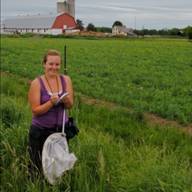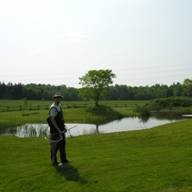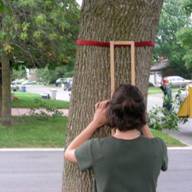My students and I study the effects of landscape structure on biodiversity and the abundance, distribution and persistence of wildlife populations.
 Landscape structure includes the amounts of various kinds of land cover in a landscape (e.g., forest, wetland, roads, crop fields), and the spatial arrangement of these cover types. Landscape structure affects populations by affecting reproduction, mortality, and movement. Since landscape structure is strongly affected by human activities such as forestry, agriculture, and development, the results of our research are relevant to land-use decisions.
Landscape structure includes the amounts of various kinds of land cover in a landscape (e.g., forest, wetland, roads, crop fields), and the spatial arrangement of these cover types. Landscape structure affects populations by affecting reproduction, mortality, and movement. Since landscape structure is strongly affected by human activities such as forestry, agriculture, and development, the results of our research are relevant to land-use decisions.
 We use a combination of spatial simulation modelling and field studies on a wide range of different organisms including frogs and toads, turtles, birds, mammals, insects, other arthropods, plants and lichens.
We use a combination of spatial simulation modelling and field studies on a wide range of different organisms including frogs and toads, turtles, birds, mammals, insects, other arthropods, plants and lichens.
Some major research questions include:
- How do roads and traffic affect wildlife populations and how can these effects be mitigated?
- How does the spatial patterning of crop fields affect biodiversity and ecosystem services in farmlands?
- At what spatial extent should we study the effects of landscape structure on biodiversity and wildlife populations?
- What are the separate effects of habitat loss and habitat fragmentation on biodiversity and wildlife populations?